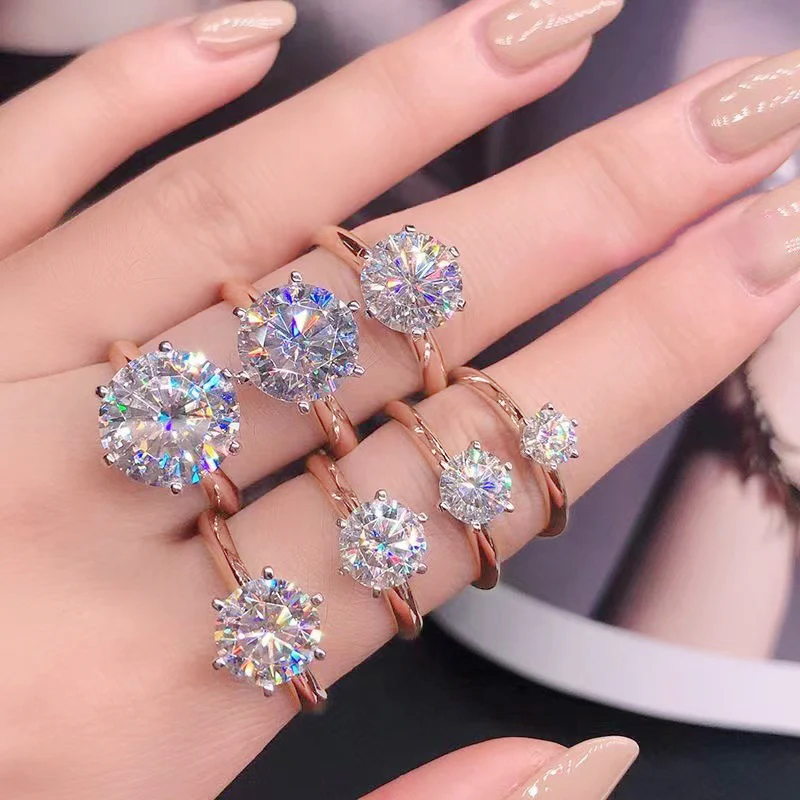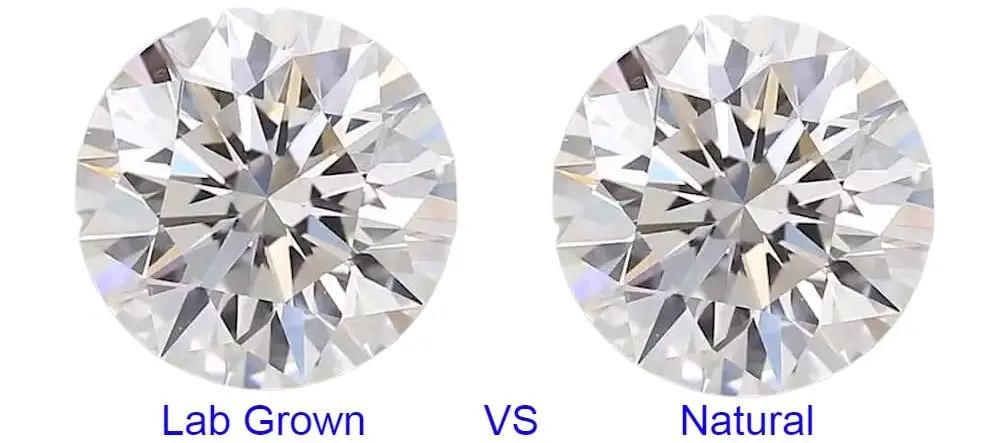Diamonds Shapes Pros and Cons: A Choosing the Perfect Diamond

When it comes to selecting a diamond, one of the most important decisions you’ll make is choosing the shape. Diamonds come in a variety of shapes, each with its own unique characteristics, and understanding the pros and cons of each shape can help you make an informed choice. In this article, we’ll explore the different diamond shapes and highlight their respective advantages and disadvantages, so you can choose the right one for your needs.
Round Diamond Shape: Timeless and Classic
Round diamonds are the most popular diamond shape, and for good reason. The round brilliant cut is designed to maximize the diamond’s sparkle and brilliance, making it a stunning choice for engagement rings and other fine jewelry. One of the biggest pros of round diamonds is their versatility. They can be paired with nearly any setting, from solitaires to halos, and complement any style. Furthermore lab grown diamonds, round diamonds are timeless and never go out of fashion, ensuring that your jewelry will remain stylish for years to come.
However, round diamonds also come with some cons. Due to their popularity, round diamonds can be more expensive compared to other shapes, especially when it comes to carat weight. Additionally, the cutting process for round diamonds can result in more waste of the original rough stone, which may increase the overall cost.
Princess Diamond Shape: Modern and Elegant
Princess-cut diamonds are known for their modern appeal and sharp, geometric shape. They have pointed corners and a square or rectangular silhouette, offering a contemporary look that pairs well with both classic and modern settings. One of the biggest pros of princess diamonds is their brilliance. The way the facets are cut allows for excellent light reflection, giving the stone a dazzling sparkle.
The main con of princess diamonds is their corners, which can be prone to chipping. While the sharp corners add to the diamond’s distinct look, they can be vulnerable to damage if not handled carefully. As a result, a protective setting may be necessary to prevent chipping.
Oval Diamond Shape: Elegant and Elongated
The oval diamond shape offers the brilliance of a round diamond but with an elongated form. This shape is perfect for those who want the sparkle of a round diamond but with a more unique and elongated appearance. One of the main pros of oval diamonds is their ability to create the illusion of a larger diamond, especially when viewed from above. The elongated shape can also make fingers appear longer and more slender.
One of the cons of oval diamonds is the “bow tie” effect, where a dark area can appear in the center of the diamond due to the way light interacts with the facets. While this is not always noticeable, it can affect the overall appearance of the diamond if not cut correctly. Additionally, oval diamonds can sometimes be more difficult to find in stores compared to round or princess cuts.
Cushion Diamond Shape: Vintage and Romantic
Cushion-cut diamonds have a vintage appeal, combining the rounded corners of an oval diamond with a square shape. This shape often has larger facets, which enhances the diamond’s brilliance and gives it a soft, romantic glow. One of the main pros of cushion diamonds is their unique and charming appearance. They are perfect for those looking for something a bit different from the typical round or princess-cut diamond.
However, cushion diamonds also come with some cons. Because of their rounded corners, they may not appear as sharp or defined as other shapes. Additionally, the larger facets can make cushion diamonds more prone to showing inclusions or blemishes, especially if the diamond is not of high clarity. Therefore, careful consideration of the diamond’s clarity is important when selecting a cushion-cut stone.
Emerald Diamond Shape: Elegant and Refined
Emerald-cut diamonds have a rectangular shape with step-cut facets that create a hall of mirrors effect, allowing for exceptional clarity. This shape is popular for those seeking a more elegant and refined diamond with a sophisticated look. One of the pros of emerald diamonds is their distinctive appearance. The long lines and open facets give the stone a unique and classic charm that appeals to many buyers.
The primary con of emerald-cut diamonds is that they do not have as much sparkle as other shapes like round or princess cuts. The step-cut facets do not reflect as much light, which can result in less brilliance. Additionally, emerald diamonds can be more expensive than other shapes due to their larger size and elegant appearance, so it’s essential to consider your budget when choosing an emerald-cut diamond.
Asscher Diamond Shape: Timeless and Elegant
Asscher-cut diamonds are very similar to emerald cuts, but they have a square shape with cropped corners. This shape is known for its vintage charm and high level of clarity. One of the key pros of Asscher diamonds is their classic, timeless appeal. The geometric facets create a striking visual effect, making them a popular choice for engagement rings.
One of the cons of Asscher diamonds is that they can be difficult to find, as they are not as commonly available as round or princess-cut diamonds. Additionally, like the emerald cut, Asscher diamonds may not exhibit as much sparkle as other diamond shapes, which can be a downside for some buyers.
Radiant Diamond Shape: Brilliant and Versatile
Radiant-cut diamonds are a versatile choice, offering the brilliance of a round diamond combined with the unique shape of an emerald or princess-cut stone. Radiant diamonds have cut corners and a rectangular or square shape, with a brilliant-cut facet structure that maximizes light reflection. One of the biggest pros of radiant diamonds is their incredible sparkle. The brilliant-cut facets ensure that the diamond reflects light beautifully, creating a vibrant and eye-catching appearance.
The main downside of radiant diamonds is that their corners, like those of the princess cut, can be more susceptible to damage. Protective settings are recommended to minimize the risk of chipping. Additionally, the radiant shape’s brilliance may not appeal to those who prefer the more subtle sparkle of step-cut diamonds like emerald or Asscher cuts.
Marquise Diamond Shape: Unique and Elegant
Marquise diamonds are characterized by their elongated shape with pointed ends diamonds shapes pros and cons, resembling a football or boat hull. This shape maximizes the carat weight, making the diamond appear larger than it actually is. One of the pros of marquise diamonds is their ability to create the illusion of size, making them an excellent choice for those who want a larger-looking diamond without paying for a higher carat weight.
However, one of the cons of marquise diamonds is the potential for the points to chip or get damaged, so a protective setting is necessary to safeguard the diamond. Additionally, some people find the shape less versatile and harder to pair with certain ring settings.
Pear Diamond Shape: Unique and Feminine
The pear-shaped diamond is a combination of the round and marquise cuts, with a teardrop shape that’s both unique and feminine. One of the main pros of pear-shaped diamonds is their ability to create the illusion of a larger stone due to their elongated shape. They are also very flattering on the finger, adding a touch of elegance and grace.
The cons of pear-shaped diamonds include the “bow tie” effect, similar to oval diamonds, where a dark area can appear in the center of the stone. Additionally, the shape’s asymmetry may not appeal to all buyers, as it may seem less balanced compared to other diamond shapes.
Conclusion
In conclusion, the pros and cons of diamond shapes vary depending on personal preferences and priorities. Whether you choose a round diamond for its timeless appeal, a princess diamond for its modern elegance, or a cushion diamond for its vintage charm, each shape offers unique benefits and drawbacks. Understanding the characteristics of each diamond shape will help you make an informed decision that fits your style, budget, and desired brilliance. When choosing a diamond, it’s important to consider both the aesthetic and practical aspects, ensuring that your selection is a perfect reflection of your taste and values.


:max_bytes(150000):strip_icc()/Web_1500-bri-lab-grown-diamonds-test-ritani-r3-jthompson-0553-145b55fc41804261b85c96b1ca63a28b.jpg)



